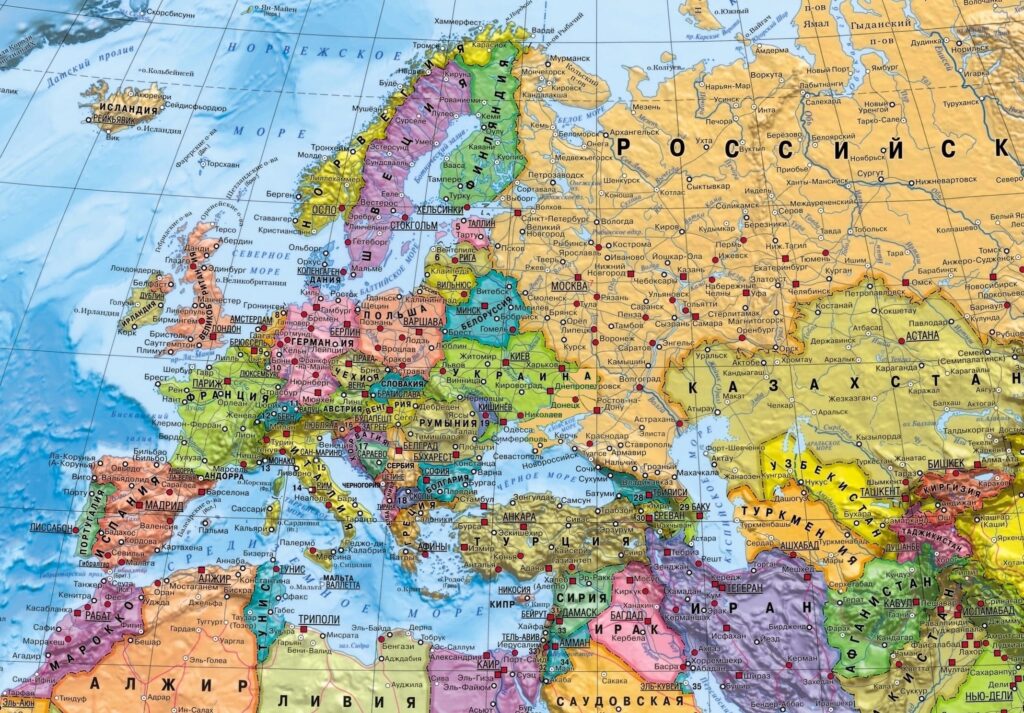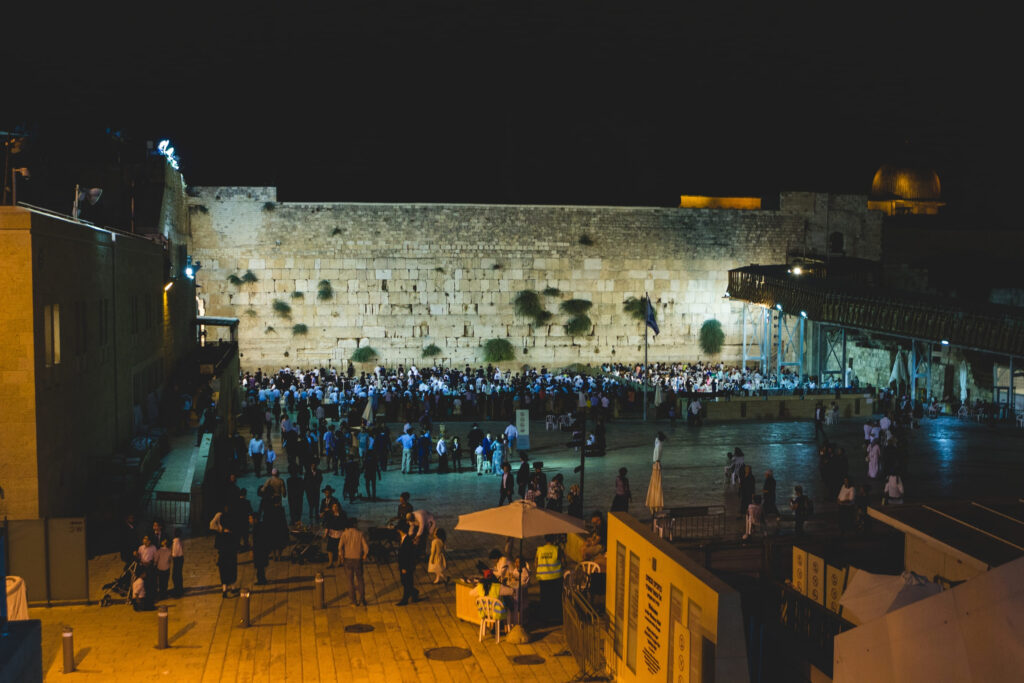In recent times, biblical texts have truly come alive for people. For example, diseases and constant wars were predicted by God 2,000 years ago. Someone could have said that it’s impossible to lock down the entire world, but it happened, I’m talking about COVID! Others thought that a full-scale war in the 21st century was the imagination of panic-mongers. However, it turns out that the texts from the Bible are not lying to us, which means we can explore an interesting topic and try to assess future events.
Magog in the Bible
We are talking about Magog from the 20th chapter of Revelation. Let’s delve into who he is and what role he plays in history. This topic, while not the most popular for discussion from the Bible, becomes intriguing upon closer examination.
In Judaism and Christianity, Magog is closely associated with apocalyptic events. But did you know who exactly is mentioned in the Holy Scriptures? Magog is the name of a person who lived after the flood, and it is also the name of a people and a land from which a threat to God’s people arises.
Let’s start from the beginning. In the Book of Genesis, chapter 10, we can find the genealogy of Noah, who built the Ark, and his descendants. Magog is mentioned as one of the sons of Japheth, and they, as known, later inhabited the continent of Eurasia. This is significant for our further understanding.
However, the name Magog is mentioned not only in the Book of Genesis and Revelation. The prophet Ezekiel describes the “battle” of Armageddon, which can be read about in chapters 38-39. In these verses, it is said that from the land of Magog, a ruler named Gog will come forth, who is also associated with the Antichrist and the beast from the 13th chapter of the Book of Revelation. Thus, Magog is intertwined with the history of humanity across many biblical texts. It is truly remarkable, isn’t it?
In the 20th chapter of Revelation, verse 7 narrates:
“But when the thousand years are ended, Satan will be released from his prison and will come out to deceive the nations that are at the four corners of the earth, Gog and Magog, to gather them for battle; their number is like the sand of the sea.”
Where is the land of Magog
These nations will march against Jerusalem. Twice, in fact. The first battle is the Armageddon, when the beast and the false prophet lead their armies, and the second is the event described in the 20th chapter of Revelation.
Throughout history, some people have associated Magog with Nazi Germany and Hitler, the Ottoman Empire, the British Empire, while others have seen it as China. However, these examples clearly do not align with the geographical references in the Bible. And as we know, the history of humanity continues, so the events from the 20th chapter of Revelation have not yet occurred.
It is crucial to understand the location of the land of Magog. As we discussed, Japheth, the son of Noah, inhabited the land of Eurasia, and Magog had a part of this land. Let’s turn to the book of Ezekiel: in chapters 38 and 39, it is stated that Gog will come out of the northern land and from the far north.
I emphasize, from the far north. Since Gog is a prince, his capital should be a significant city and not just any random place. With the use of modern technology, we can easily discover his capital. To do this, we need to take a compass and start looking to the north. Logically, God spoke to a Jewish prophet and through him to all Israelites, so we won’t go wrong if we consider Jerusalem the “right place” to start the search.
If we look strictly to the north on a map from Jerusalem, what do we see? We cross the Mediterranean Sea, the Turkish city of Kayseri, the Black Sea, the Sea of Azov, and some regions of Ukraine. But so far, we haven’t come across a capital until we move further north. And here, we encounter a strategic and ideological city — Moscow.

Historical evidence
Oh, this is indeed the far north, and to cover such a distance to the south towards Jerusalem, Gog from Magog will need comfortable footwear, not felt boots.
Now, let’s delve into whether there are any historical pieces of evidence linking Magog to the lands of Russia. In the territory we are discussing, northern Scythia or Scythia, archaeologists have discovered and continue to find characteristic artifacts such as burial mounds, weapons, and adornments, confirming the presence of Scythians in these lands. There are no questions about this topic.
Furthermore, in ancient Jewish tradition, the Scythians were considered a northern people, and they were seen as representatives of Magog. Here are a few historical confirmations:
The ancient historian Josephus Flavius, in his work “Antiquities of the Jews” supports this idea and states that the Greeks called Magog the Scythians. Quoting Josephus Flavius: “Magog gave rise to that nation which from him was called Magogites, but who by the Greeks were called Scythians.”
Could the historian have been mistaken? Of course, there was no such state as the Russian Federation at that time. The Jews only knew that to the north, beyond the Caucasian mountains, lived a people hostile to them. In confirmation of these words, Justin Martyr, one of the early Christian apologists, wrote in his “Dialogue with Trypho,” “From Magog, the son of Japheth, barbarous nations spread through the extensive regions of Scythia and the northern territories.”
These nations are ancient and cunning enemies of the people of Israel, as indicated by Sacred Scripture. We come to the only conclusion that the Scythians are indeed Magog!
It turns out that according to prophecy, it is precisely from these lands that an army will march against Israel.
Modern Events
Regarding this topic, discussions have persisted to this day. However, by examining the genealogy from Noah, the prophecies of Ezekiel, the visions of the Apostle John, as well as the historical perception of the Scythians, we can conclude that the enigmatic land of Magog is linked to modern-day Russia.
It’s interesting to note that even in the past 100 years, the Soviet Union and contemporary Russia have had closer ties on the international stage with Palestine, Pakistan, and Syria—nations known for their strong anti-Semitic sentiments.
The Cold War with the United States brought Israel closer to the American government. It is widely known that in military conflicts, Arab countries receive assistance from Russia, while representatives of the United States provide advanced military technologies to Jerusalem. Russia continues to pursue its own imperial interests, and in light of recent events, there is little doubt that Moscow harbors intentions that are less than peaceful toward many nations.
One example of support for Palestinians, even in the most condemning circumstances, occurred in 1972 during the Munich Olympics when the Palestinian national movement carried out a terrorist act against Israeli athletes. The Soviet Union took an ambiguous stance at that time, expressing condolences to Israel but simultaneously condemning the country’s policies toward the Palestinian people.
Furthermore, the Soviet Union offered refuge to surviving criminals and eventually released them, a gesture that left many perplexed. This situation is repeating itself: the world condemns Russia’s actions, yet nothing currently hinders them from committing wrongdoings. The world has divided into those who support the Jews and those who oppose them. These are significant indicators providing hints about the future of history.
For the sake of fairness, it’s important to mention another popular interpretation of Magog. It suggests that the concept of a northern enemy has an allegorical nature. In other words, the attack on Israel could come from nations from various regions not necessarily tied to the north.

The key point here is that they will harbor hatred for God’s people and unite for the destruction of Jerusalem. This version has its merits, but such geographical, historical, and biblical references to Russia cannot be mere coincidence.
We find confirmation of this in Revelation 17, where it directly states that the beast, also known as Gog, will have ten allied kings who will grant their power and authority to the beast.
“And the ten horns that you saw are ten kings who have not yet received royal power, but they are to receive authority as kings for one hour, together with the beast… They are of one mind and hand over their power and authority to the beast.”
Furthermore, in Revelation 17, there is another reference to the city of Moscow.
“The woman that you saw is the great city that has dominion over the kings of the earth.”
In other words, this city is a capital, a great city, and it rules.
Additionally, in this chapter, there is a clue about this great city (not every capital can fit this description):
“Here is the mind that has wisdom: the seven heads are seven mountains on which the woman is seated.”
If you search online, you’ll find that Moscow is indeed situated on seven hills, fitting this description. In general, this is one of the primary methods of studying the Book of Revelation—every sign provided by the Angel must align perfectly, like puzzle pieces.
No matter how history unfolds, whether we align ourselves with God’s people, the Christians, or find ourselves in league with Magog, it depends on our faith in God. The Bible clearly states that the ruler Gog and his followers will suffer a terrible defeat, and we certainly do not want to be among them.
In any case, we need to be cautious because we do not know when the final “battle” of Armageddon will occur. Our goal is to understand where the danger may come from and to analyze information correctly to find ourselves on the right side during this “clash.”